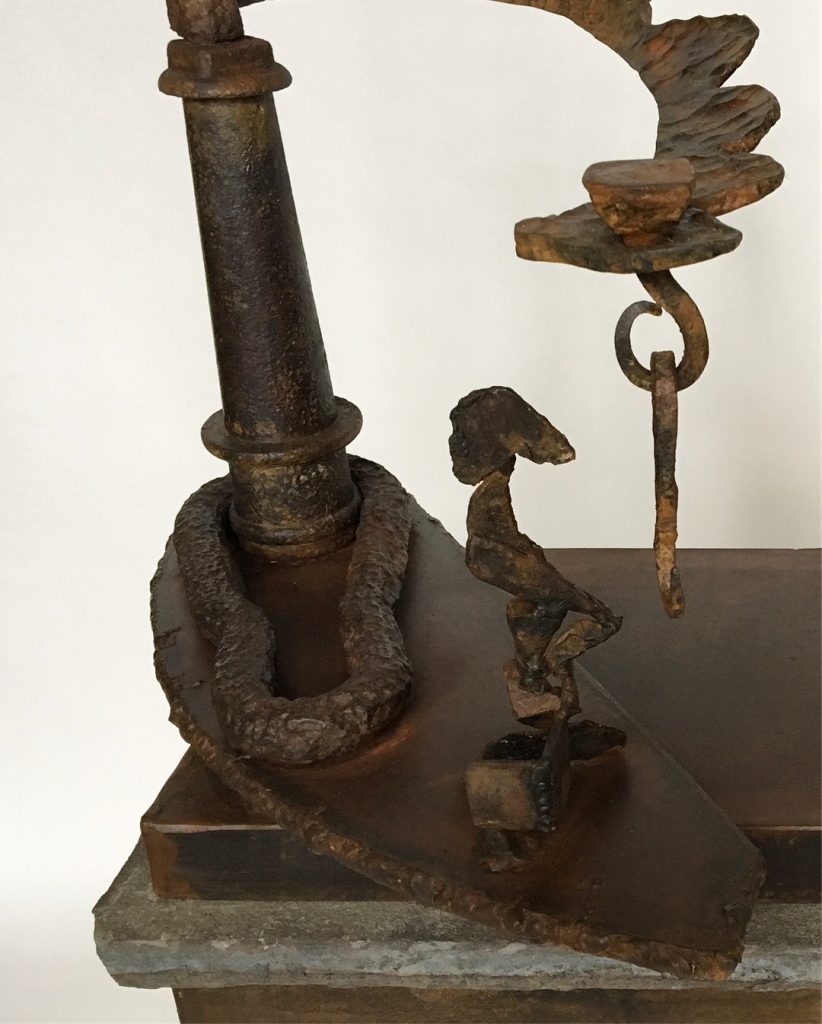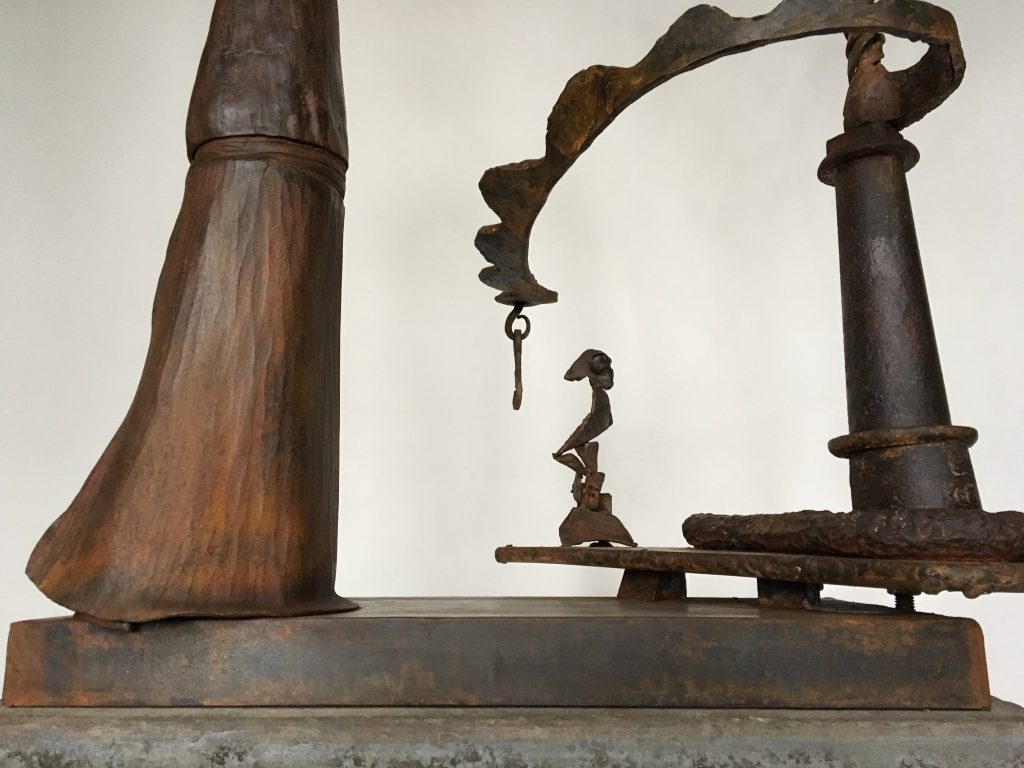Based on my mother’s childhood in Memel, Lithuania. She was born there in 1930 and by the age of 12 she and her brother and parents were on the run from onslaught of Nazi Germany. Aside from one uncle they were the only family members to survive. All the rest were murdered in Auschwitz.
The Lightkeeper, her father, was a hero. Thanks to the miracle of Chinue Sugihara, he aquired transit visas through Japan so that they could leave Lithuania, After a short time in Russia, they fled Stalin’s purges via the trans Siberian railway and lived in Japan until they were forced into the Shanghai Ghetto. Against all odds he kept them alive and brought them to America at the end of the war.
In “The Light Keeper’s Daughter,” Mr. Feldman has created a deeply layered narrative exploring a dreamworld of abstract figuration within the historical context of his mother’s childhood home. It is a technically masterful, tour de force filled with mystery, nuance and metaphor in the tradition of great works by artists such as Marc Chagall, Alberto Giacometti, and David Smith.
As a refugee from Hitler’s onslaught throughout Europe, The artist’s mother related numerous childhood experiences which remain etched in his mind. The memories of herBaltic Sea coast home form the particular basis for this challenging work.
While it’s title suggests that the artist grandfather might have been the lighthouse keeper, the reference is entirely metaphorical. For a family whose journey included a harrowing night time passage through a Nazi check points while hiding in a haywagon, 10 days on the Trans-Siberian railroad, and finally, internment in the ghetto at Shanghai China,
the light was simply survival and it was that light which he kept alive. In the autobiography of Jacques Lusseyran the blind hero of the French resistance, light equates to hope. Lusseyran’s unique gift was the perception of energetic light versus darkness. This ability allowed him to identify Nazi collaborators attempting to infiltrate the resistance. His ability to perceive light was only extinguished when he was captured and tortured and overcome with fear and despair.
On one side of the base are found a set of geographical coordinates. These mark the location of the lighthouse in what was Memel, Lithuania. On the other side we see what appears to be a small window. within this is an abstract figure with an arm raised as if in salute or maybe a wave. however, the way in which it retreats, or recoils, reflects a story told to the artist by his mother. She remembered being horrified when Adolf Hitler drove through Memel as a precursor to his invasion. Now we see her confused, repulsed, watching.
A second small figure takes the form of a fish sitting in a chair. Nearby is a menacing hook that dangles from a wavelike arm. This fanciful portrayal evokes the telling of children’s stories and symbolically suggests escape from danger. The hook extends from a wave- like form which has been suggested to symbolize the wave of National Socialism,
Rising further, the work evolves into two main figurative elements. One, with a base whose form suggests that of a lighthouse, reaches toward the sky with one arm transmuting into an organic fan or hand like form. A secondary arm like element is the wave mentioned earlier.









